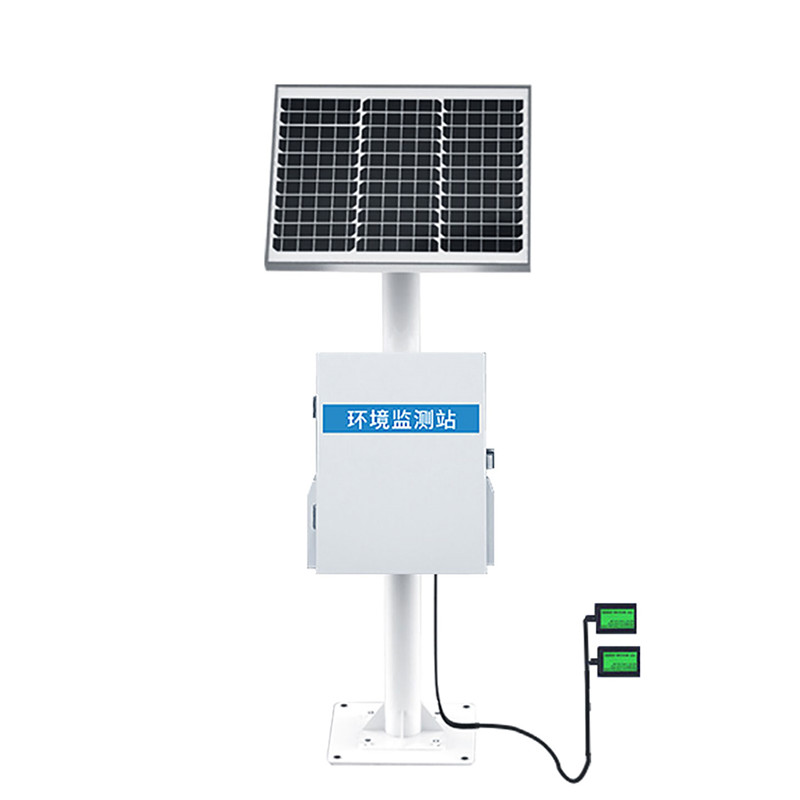Tianyi Sensor IOT Technology Co., Ltd
Sales Manager:Ms. Emily Wang
Cel,Whatsapp,Wechat:+86 15898932201
Email:info@fengtutec.com
Add:No. 155 Optoelectronic Industry Accelerator, Gaoxin District, Weifang, Shandong, China

Sales Manager:Ms. Emily Wang
Cel,Whatsapp,Wechat:+86 15898932201
Email:info@fengtutec.com
Add:No. 155 Optoelectronic Industry Accelerator, Gaoxin District, Weifang, Shandong, China
time:2025-11-12 09:01:56 source:Weather Station viewed:4 time
In today's intertwined context of agricultural modernization and ecological conservation needs, dynamic changes in soil moisture directly impact crop growth, water resource utilization, and ecosystem stability. Automatic Soil Monitoring Systems are becoming the link connecting farmland management with disaster prevention and mitigation.
Traditional manual monitoring, due to its low frequency and limited coverage, struggles to meet real-time decision-making demands. In contrast, Automatic Soil Monitoring Systems, with their all-weather, multi-parameter monitoring capabilities, provide the technology and data for regional farmland moisture research and drought resistance and disaster reduction.
These monitoring stations accurately capture moisture content in different soil layers by integrating sensing technologies such as Frequency Domain Reflectometry (FDR) or Time Domain Reflectometry (TDR), while simultaneously monitoring key indicators like soil temperature and electrical conductivity.
01 Automatic Soil Monitoring System: Equipment Composition and Technical Features
The Automatic Soil Monitoring System is a precision monitoring system composed of multiple components.
It integrates sensor technology, wireless communication, and solar power supply, enabling it to adapt to harsh field environments and achieve long-term continuous monitoring.
The system hardware mainly includes soil moisture sensors, remote telemetry units (RTU), power supply systems, and communication modules.
The core sensors often utilize the FDR principle, such as the FT-GS5 tube-type soil moisture and temperature sensor, which measures soil volumetric water content based on dielectric constant, with an accuracy of up to ±3%. It should be noted that soils with high organic matter (soil organic carbon content >12%) and high clay content (clay content >45%) may require calibration for specific soil types due to dielectric relaxation characteristics.
The low-power design, combined with solar panels and battery power supply systems, allows for continuous operation even during overcast or rainy weather.
Communication methods are diverse, allowing selection of wireless transmission technologies such as GPRS, 4G, LoRa, or NB-IoT based on actual scenarios to achieve remote data transmission.
Modern monitoring stations also possess multi-layer monitoring capabilities; a single sensor can simultaneously measure soil parameters at 3 layers or even up to 10 layers below the surface, obtaining data on the moisture distribution within the soil profile.
02 Regional Farmland Moisture Research: Comprehensive Analysis of Soil Moisture Dynamics
In regional farmland moisture research, Automatic Soil Monitoring Systems reveal the spatiotemporal patterns of soil moisture through the deployment of monitoring networks.
Research applications typically establish soil moisture monitoring networks at different administrative levels (province, city, county), forming an extensive monitoring system.
Through layered monitoring, scientists can understand crop root water uptake patterns and analyze the characteristics of vertical water distribution, providing a scientific basis for crop root research and soil nutrient transport.
Long-term, continuous data accumulation enables researchers to analyze the relationship between soil moisture, climate change, and vegetation restoration, offering data support for optimizing ecological restoration plans.
Prediction models established based on monitoring data, such as BP neural network models, can accurately forecast soil moisture conditions, providing support for research on water cycles, heat balance, carbon cycles, and other topics.
03 Drought Resistance and Disaster Reduction Practice: From Early Warning to Precision Irrigation
Automatic Soil Monitoring Systems play a role in real-time early warning and decision support for drought resistance and disaster reduction.
The system provides immediate alert information when monitored data exceeds preset thresholds, offering timely basis for drought response decisions.
In regional drought monitoring, stations can be deployed as networks to achieve large-scale drought assessment, helping agricultural departments grasp the overall soil moisture status and formulate scientific drought mitigation strategies.
Irrigation guidance is another important application. Monitoring data can directly guide quantitative and timely irrigation, effectively reducing water waste and improving agricultural water use efficiency.
The landslide early warning function based on soil moisture allows the monitoring stations to also be applied in geological disaster prevention, issuing alerts when soil water content reaches critical values.
In summary, through precise monitoring, data support, and scientific guidance, Automatic Soil Monitoring Systems establish a modern framework for regional farmland moisture research and drought resistance and disaster reduction. They provide crucial technological means for ensuring stable agricultural production and improving water resource utilization efficiency, driving agriculture towards precision, high efficiency, and enhanced risk resilience.

Good air quality is the fundamental guarantee for a healthy life. To more effectively manage and improve the ambient air quality, air quality monitoring stations have emerged, which have strongly promoted the refined management of ambient air quality.Air quality monitoring stations are compact in si...
The buoy-type online water quality monitoring system is a modern water body monitoring method. As an automated device for long-term and real-time monitoring of water quality, it is widely used in environmental monitoring of various water areas such as rivers, lakes, oceans, reservoirs, and aquacultu...
In the solar energy industry, the quality of photovoltaic (PV) modules affects their power generation efficiency, and the EL detector is an important tool for inspecting the quality of PV modules.The EL detector works based on the principle of electroluminescence. When a forward voltage is applied t...
Weather conditions have always been a key factor affecting crop growth and harvest. Alas! Frequent meteorological disasters have brought great crises to agriculture!Drought, a common meteorological disaster, results from prolonged precipitation scarcity, leading to soil water shortage and dry air. C...